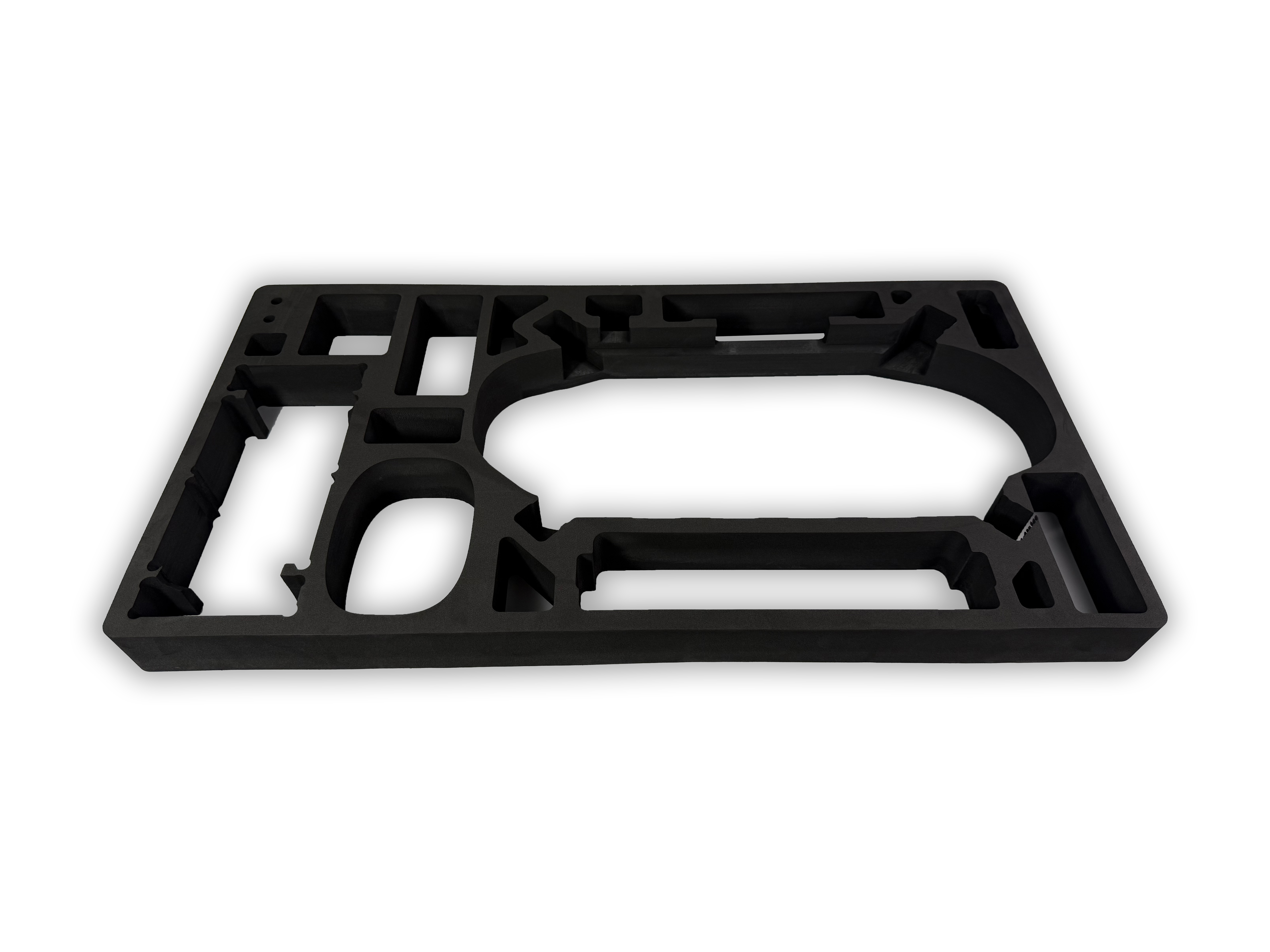EVA Foam Molding Process: A Complete Guide for Manufacturers and Innovators
2025-07-03
Table of Contents
- Introduction
- What is EVA Foam?
- EVA Foam Molding Process Overview
- Types of EVA Foam Molding Techniques
- Step-by-Step EVA Foam Molding Process
- Applications of Molded EVA Foam
- Fubo: Trusted EVA Foam Manufacturer
- Quality Control in EVA Foam Molding
- Benefits of EVA Foam Molding
- Summary Table
Introduction
EVA foam molding is a specialized manufacturing process used to create durable, flexible, and resilient foam products. EVA, or Ethylene-Vinyl Acetate, is widely used across industries due to its shock-absorbing and cushioning properties. In this article, we explore how the EVA foam molding process works, its various types, practical applications, and highlight one of the leading EVA foam suppliers: Fubo.

What is EVA Foam?
EVA (Ethylene-Vinyl Acetate) is a closed-cell foam that combines softness, flexibility, and durability. It's non-toxic, lightweight, and provides excellent cushioning, making it ideal for consumer, industrial, and sports applications.
Key Properties of EVA Foam:
- Shock-absorbing and impact-resistant
- Lightweight and waterproof
- Excellent thermal insulation
- Flexible and moldable at high temperatures
- Resistant to chemicals and UV radiation
EVA Foam Molding Process Overview
EVA foam molding involves heating, forming, and cooling EVA materials into specific shapes using molds. The goal is to create products with precise dimensions and consistent performance. The molding method varies based on the end-use product, production volume, and material characteristics.
Types of EVA Foam Molding Techniques
1. Compression Molding
- Most common method for EVA molding
- Uses heated molds to compress EVA sheets into shape
- Best for high-volume production and complex designs
2. Injection Molding
- Melted EVA resin is injected into a mold cavity
- Enables high-speed, high-precision production
- Ideal for small to medium-sized components
3. Thermoforming
- EVA sheets are heated and vacuum-formed over a mold
- Often used for packaging inserts and foam trays
4. Die Cutting + Laminating
- Foam sheets are stamped or cut into shapes, then molded with heat or glue
- Used in simple packaging and protective applications
Step-by-Step EVA Foam Molding Process
Step 1: Material Preparation
- Choose the right EVA grade based on hardness, density, and flexibility
- Cut foam sheets or pellets according to mold size
Step 2: Mold Design and Fabrication
- Design custom aluminum or steel molds using CAD software
- Precision machining ensures tight tolerances and consistent quality
Step 3: Heating
- Preheat EVA foam or pellets to a specific temperature (usually 120°C–160°C)
- Ensure uniform heating to avoid deformities
Step 4: Molding
- Place heated foam into the mold cavity
- Apply pressure to shape and form the foam inside the mold
- Hold for 1–3 minutes depending on thickness and complexity
Step 5: Cooling and Ejection
- Cool the molded foam using ambient air or water channels
- Remove molded part from the mold carefully to prevent tearing
Step 6: Trimming and Finishing
- Trim excess material using CNC or manual cutting
- Surface finishing (polishing, printing, lamination) as needed
Applications of Molded EVA Foam
Molded EVA foam is found in a wide range of industries due to its protective, flexible, and aesthetic properties.
Industrial Applications:
- Protective packaging for electronics and tools
- Shock-absorbing linings for equipment cases
Consumer Goods:
- Shoe soles, yoga mats, and toys
- Swimming boards and outdoor gear
Automotive:
- Interior padding and insulation
- Gaskets and seals
Medical & Sports:
- Orthopedic supports and insoles
- Helmets, gloves, and padding
Fubo: Trusted EVA Foam Manufacturer
Located in Xiegang, Dongguan, Guangdong, China, Fubo is a professional EVA foam manufacturer that delivers custom foam solutions for a wide array of industries.
Key Offerings from Fubo:
- Customized EVA Foam Inner Lining – For electronics, hardware, and packaging
- EVA Foam Swimming Board – Safe and buoyant design for kids and athletes
- EVA Toys with Numerical Letters – Educational and non-toxic foam toys
- EVA Cushioning and Protective Material – For drones, semiconductors, and appliances
- Soilless Culture Foam Board – Used in hydroponic farming and sustainable agriculture
Industries Served:
- Semiconductors and electronics
- Home appliances and computers
- New energy, LED, and sports equipment
Why Choose Fubo?
- OEM and ODM support
- High-quality materials with precise molding
- Shock absorption, thermal insulation, and design flexibility
Quality Control in EVA Foam Molding
To ensure optimal product performance, quality control is enforced at multiple levels:
- Raw Material Inspection: EVA grade, color, hardness
- Mold Accuracy: Verified using 3D measurement tools
- Dimensional Consistency: Parts are inspected post-production
- Durability Testing: Compression, water resistance, and UV exposure
Benefits of EVA Foam Molding
- Design Freedom: Allows for 2D and 3D geometric shapes
- Lightweight: EVA foam is ideal for weight-sensitive applications
- Environmentally Friendly: Non-toxic, recyclable material
- Cost-Efficient: High output with minimal material waste
- Enhanced Safety: Soft foam reduces injury risks in consumer products
Summary Table
| Aspect | Details |
|---|---|
| Material | Ethylene-Vinyl Acetate (EVA) |
| Primary Molding Methods | Compression, Injection, Thermoforming, Die-cutting |
| Key Benefits | Shock absorption, flexibility, waterproof, lightweight |
| Applications | Electronics, toys, sports gear, agriculture, automotive |
| Fubo Products | Customized foam linings, toys, swim boards, culture boards |
| Location | Xiegang, Dongguan, Guangdong, China |
